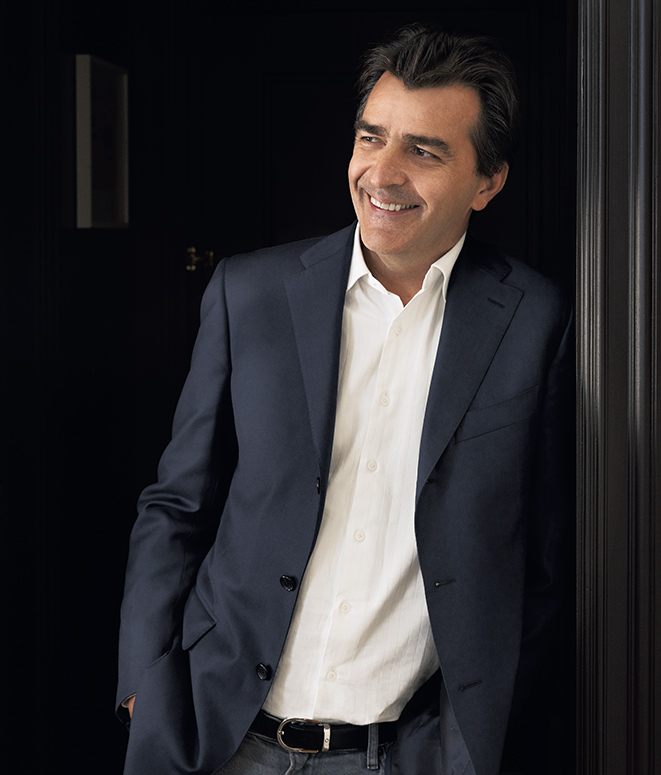BY DAVID HAGEDORN || PORTRAIT BY WESLEY MANN
For chef Yannick Alléno, 2017 was a most excellent year. He earned three Michelin stars for Le 1947, his restaurant at Cheval Blanc in Courchevel, and maintained three stars for Alléno Paris at Pavillon Ledoyen, the latter debuting on the exclusive World’s 50 Best Restaurants, entering its ranks at number 31. These achievements are three among the many acquired during his career, which has included stints at Le Royal Monceau, Sofitel Porte de Sévres, Drouant, and Le Meurice. Now the master of his own kitchens, Alléno set out in 2013 to revolutionize French cooking. His mission: to restore sauces to their rightful place as a driving force in French cuisine.
Alléno enlisted Dr. Bruno Goussault at the Culinary Research and Education Academy in Sterling, Virginia, to help develop a method that now involves fermentation, extraction, reduction, and blending. Alléno cooks individual ingredients sous vide, fermenting certain ones first to boost their flavor, and then extracts their essential juices. Then, he reduces the juice—not by heat, but by cryoconcentration—by freezing it and then separating the ice from liquid extraction using a centrifuge.
Finally, Alléno blends the reductions to create complex sauces. Speaking by phone from Paris, Alléno explains the thought process behind his groundbreaking reinvention of sauces.
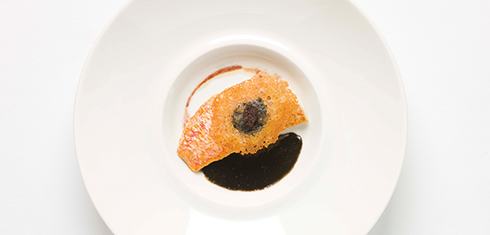
Sous-Vide: Congratulations on becoming a double three-star Michelin chef and Pavillon Ledoyen’s debut on the World’s 50 Best Restaurants list. Is the pressure of staying there different from the pressure of getting there?
Yannick Alléno: I wish to be higher. Michelin isn’t pressure for me, it’s just something to make me better. Some say Michelin is the worst thing ever because of the pressure, but for me it is a great motivation. It’s the same for a dancer or a swimmer. There has to be pressure to make things happen, for them to create. Critics are great—not a bad thing.
SV: You grew up working in your parent’s restaurant. How did that inform your career?
YA: It was a bistro and I worked behind the counter. For me, it’s the same to make three stars in a bistro or a place like mine. You have to make people feel happy and at home and that’s what I do in my restaurants. What I want to give to the customers is to try to be better every day.
SV: You launched the Modern French cuisine movement in 2013. How did you marry traditional and classic methods with modernism?
YA: This is the exact point where you make the revolution. I want to enrich the past, not make it over, and so you have to think—how does food follow the evolution of society? If you think of cuisine from the 19th century to the modern day, it’s about the sauces. [Le Guide Culinaire by Auguste] Escoffier is the main book of French food. The first section is sauces. If you don’t know sauces, you don’t have the key. Everything is a sauce—crème patissière, ganache. If you change the sauce, you change the food. I gave the food business a way to understand that to change the cuisine, you have to change the verb—and the verb is the sauces. Sauces are 80 percent of the dish. They bring the other parts of the dish together.
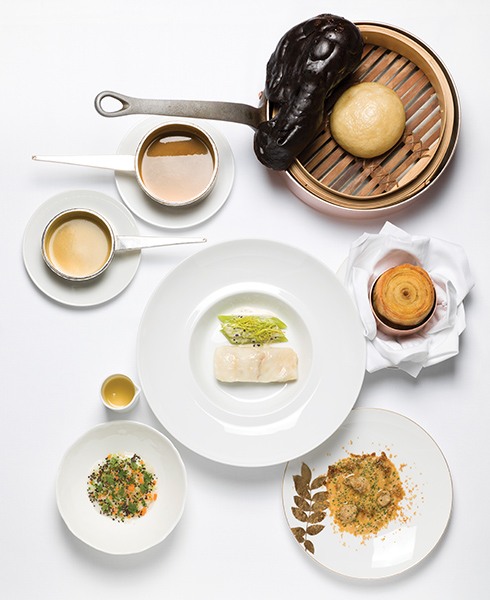
“YOU CAN GIVE SOMEONE TOOLS, BUT THEY HAVE TO KNOW WHAT TO DO WITH THEM.”
SV: Dr. Bruno Goussault was part of this revolution.
YA: Bruno—he is a revolutionary. In the beginning of humanity, a man crashed two stones together and created fire. Bruno gave the definition of fire, that you have to cook at the right temperature. The revolution wasn’t sous vide—cooking food in a stomach is basically that concept and something that has been done for a long time—the revolution is understanding the right temperature at which to cook food. That is understanding fire—and Bruno explained to the world what fire is and how to use it. A lot of chefs haven’t made that discovery yet.
SV: What did you ask Bruno to do?
YA: When you cook a terrine in the oven, two percent of the jus comes out, and that jus is just amazing. How can the customers get that in a spoon? I said, “Bruno, I want to recreate that taste in my sauces.” So, he started to make mixes of ingredients and cook them sous vide.
SV: How did it go?
YA: Two months in, I went to Cognac. I spoke to [Yann Fillioux, a Master Blender for Hennessy]. You have to close your eyes and be in the room with him—70 years old, nine people at the table, tasting eaux-de-vies. Two of them aren’t allowed to talk. They just listen for 10 years and then they can learn the taste of Cognac. The glass went around the table. What do you think of this? Can we move the cask? Change the atmosphere? They stopped at a glass that was 75 years old. “Can you confirm that this comes from this winemaker and this barrel came from this part of France?” Fillioux asked. He tasted the liquid. And he was right. He turned to the guys and asked them if they could taste that. If they can’t taste those things, it’s not ready to be Cognac. It has to wait. It has to taste the same today as it always has for generations.
SV: What did that mean to you?
YA: My sauces did not have that kind of regularity. I asked him what he is doing. He said that if you want to recreate a taste, you have to make changes every day. You have to blend. To me, that was special. I called Bruno and said we made a mistake; we’re not cooking right. We have to cook things separately and then put them together later, not start with putting the ingredients together—it was a kind of revolution.
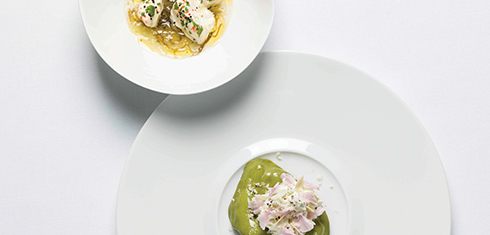
“I WANT TO ENRICH THE PAST, NOT MAKE IT OVER, AND SO YOU HAVE TO THINK—HOW DOES FOOD FOLLOW THE EVOLUTION OF SOCIETY? IF YOU THINK OF CUISINE FROM THE 19TH CENTURY TO THE MODERN DAY, IT’S ABOUT THE SAUCES. IF YOU DON’T KNOW SAUCES, YOU DON’T HAVE THE KEY.”
SV: So, sous vide is the critical basis for your sauce revolution. How did you know you were on the right path?
YA: The taste of celeriac—it was something I never had before. Cooked at 181.4°F (83°C) for 12 hours. We discovered that you should never pass through that temperature—if you go over, you kill the benefits of what you had before, all of the minerality. If you then reduce (the extractions) with heat instead of freezing, you kill the first step. We made 500 extractions over four years and figured out exactly how long to cook them and at what temperature. They were all new ways of tasting these things.
SV: Then you’ve done all the work for other chefs.
YA: Bruno makes colors for customers, but after that, how you use them—is what makes the difference. You can give someone tools, but they have to know what to do with them. There are different colors of pencils, but how you choose the colors and put them together makes them art. Cuisine is an art.
SV: Where does fermentation fit into the process?
YA: Fermentation is about terroir. With extraction, we have the opportunity to understand what is going on in the soil. Using fermentation on celeriac from four different regions [Belgium, Normandy, Pas-de-Calais, Île-de-France], flavors that were similar before turned out to be very different from one place to another. So, making a sauce is different in one place than another. Before extraction, people didn’t know that. People thought you could make the same sauce with different tomatoes.
SV: This method—fermentation, extraction, cryoconcentration, blending—can home cooks do it?
YA: If we go back to the ’80s, the beginning of nouvelle cuisine, people said, “We can never do that!” I have customers now who say, “The way you prepare these dishes, I can’t do this at home!” Of course you can’t! That’s what restaurants are for, so come here more often! The grande cuisine has to be far away from expectation. If you wear a Dior jacket, it is exceptional. Three-star restaurants have to be exceptional, too. French food is very complex; like in wine, the complexity has to be shown at the table. When the customers can do the same thing we do, we’d have to work to have four stars.
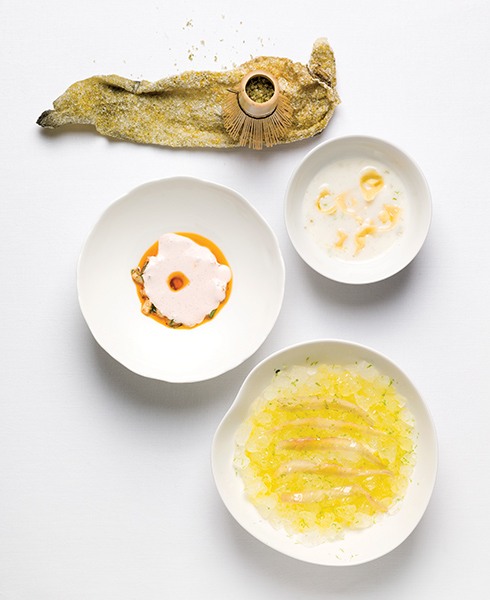
Related Articles VIEW ALL ARTICLES
Chefs & Personalities
New Royalty
Carrie and Rupert Blease's simple, ingredient-driven fare has made Lord Stanley one of San Francisco's hottest restaurants—and earned it a Michelin star for three years running.
Read More >Chefs & Personalities
Immersing Themselves: Part II
Lifehacker Food & Beverage Editor Claire Lower and Skift Table's Kristen Hawley share their thoughts on sous vide cooking.
Read More >Chefs & Personalities
Immersing Themselves: Part I
Modernist Cuisine author Nathan Myhrvold and Museum of Food and Drink founder Dave Arnold share their thoughts on sous vide cooking.
Read More >